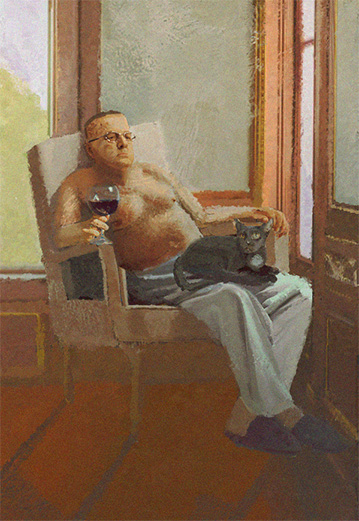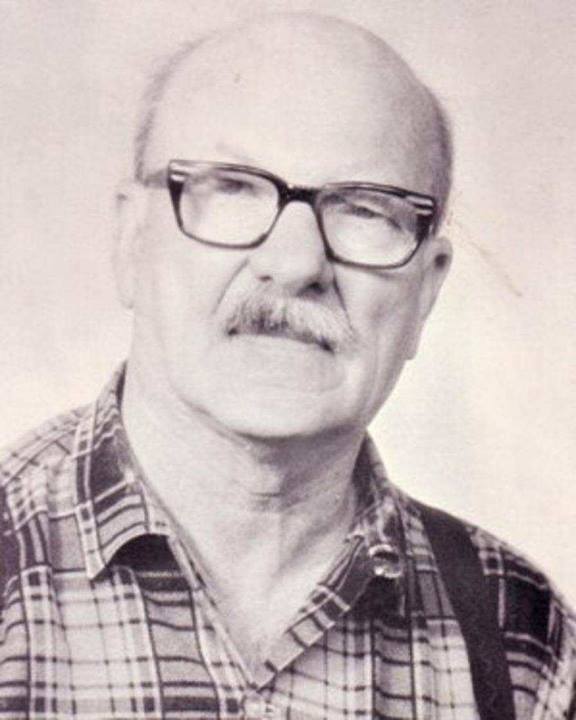Difference between revisions of "Frederick Santee"
Occultwiki (talk | contribs) |
Occultwiki (talk | contribs) |
||
| Line 17: | Line 17: | ||
He returned to Wapwallopen during his summer breaks to work on a local farm, but kept his own apartment in Boston, which was paid for by his parents. He won the Bowdoin prize for his Greek translations and graduated ''magna cum laude'' in 1924 at the age of 17 with a Bachelor's degree. | He returned to Wapwallopen during his summer breaks to work on a local farm, but kept his own apartment in Boston, which was paid for by his parents. He won the Bowdoin prize for his Greek translations and graduated ''magna cum laude'' in 1924 at the age of 17 with a Bachelor's degree. | ||
After leaving Harvard, Santee earned a second BA and an MA in classics at Oxford, before graduating from the University of Berlin with a PhD in 1928. He taught for several years, but after losing his teaching position during the Great Depression, he earned his MD in 1938 at John Hopkins University. | After leaving Harvard, Santee earned a second BA and an MA in classics at Oxford, before graduating from the University of Berlin with a PhD in 1928. He taught for several years at various schools, but after losing his teaching position during the Great Depression, he earned his MD in 1938 at John Hopkins University. | ||
==Professor at Kenyon College== | |||
In April 1938, Santee was hired as a Latin professor at Kenyon College in Ohio. He was highly regarded by his colleagues, who considered him the greatest living Latin author and on par with classical Roman authors. He published numerous poems in Latin in the ''HIKA'' literary magazine. In 1941, the students at the college performed his play, ''The Woman From Detroit'', which was an adaptation of Meander's ''The Andrian Woman''. | |||
Although he became popular with the students and ended up teaching numerous classes, his first class, a critical examination of Dante's ''Divine Comedy'' only had two students. | |||
==Involvement with the occult== | ==Involvement with the occult== | ||
| Line 35: | Line 40: | ||
Santee died peacefully in his home in early April 1980. He left over $1,000 to various cat shelters. The bulk of his $200,000 estate was left to Edna Williams. | Santee died peacefully in his home in early April 1980. He left over $1,000 to various cat shelters. The bulk of his $200,000 estate was left to Edna Williams. | ||
== | ==Author== | ||
Despite being a prolific writer throughout his lifetime, only two of Santee's books were ever published. These were both limited editions printed by small presses. | Despite being a prolific writer throughout his lifetime, only two of Santee's books were ever published. These were both limited editions printed by small presses. However, he also wrote numerous poems and medical papers. | ||
===Academic papers=== | |||
* "The Soul in Homer and Vergil" - ''TAPA, 61'' (1930) | |||
* "Homeric Ideas of the Soul" - ''Transactions and Proceedings of the American Philogical Association 1930-31'' (1932) | |||
* "Peculiar Granules in the Cells of the Liver and Adrenal in Infections" - ''Johns Hopkins Hospital Bulletin'' (1936) | |||
* ''The Treatment of Schizophrenia'', Baltimore (1938) | |||
==Plays== | |||
* ''The Woman From Detroit'' (1941) | |||
* ''The Devil's Wager'' (1979) | |||
==Poetry== | |||
* Translation of ''Goethe: Mignorij'' (1941) | |||
* ''Sawdust and Tomatoes'' (1945) | * ''Sawdust and Tomatoes'' (1945) | ||
[[Category:People]] | [[Category:People]] | ||
Revision as of 05:37, 9 August 2024

Frederick LaMotte Santee (17 September 1906 - 11 April 1980) was a medical doctor, occultist, and practicing warlock in rural Pennsylvania. He was the founder and leader of the Coven of the Catta, a coven that practices Gardnerian Wicca.
His life was an inspiration for the book Magicians, Martyrs, and Madmen, which includes his complete biography.
Early life
Santee was born on 17 September 1906 in the rural Pennsylvania town of Wapwallopen, the only child of Dr. Charles LaMotte Santee, and grandson of Dr. Ephraim A. Santee. Both his father and grandfather were practicing physicians.
Frederick was able to read English and German at age three and at the age of eight, wrote a translation of Caesar's Gallic War from the original Latin, which hd had taught himself by studying his grandfather's old Latin books. As a youth, he excelled at baseball, with a classmate claiming he was a "budding 'Babe' Ruth, whose heavy hitting had won more than one game for his team." Santee later claimed he tried very hard to be good at sports in the hopes of attracting girls.
Education
In 1920, Santee became the youngest person accepted to Harvard University, at only age 13. Newspapers around the country carried reports of his remarkable achievement. The Scranton Times stated:
Frederick Santee, 13, Wapwallopen, son of Dr. and Mrs. Santee has matriculated for the regular course in Harvard University. He is the youngest ever to enter as a candidate for degree. The boy has been unusual since his first day in school…
He returned to Wapwallopen during his summer breaks to work on a local farm, but kept his own apartment in Boston, which was paid for by his parents. He won the Bowdoin prize for his Greek translations and graduated magna cum laude in 1924 at the age of 17 with a Bachelor's degree.
After leaving Harvard, Santee earned a second BA and an MA in classics at Oxford, before graduating from the University of Berlin with a PhD in 1928. He taught for several years at various schools, but after losing his teaching position during the Great Depression, he earned his MD in 1938 at John Hopkins University.
Professor at Kenyon College
In April 1938, Santee was hired as a Latin professor at Kenyon College in Ohio. He was highly regarded by his colleagues, who considered him the greatest living Latin author and on par with classical Roman authors. He published numerous poems in Latin in the HIKA literary magazine. In 1941, the students at the college performed his play, The Woman From Detroit, which was an adaptation of Meander's The Andrian Woman.
Although he became popular with the students and ended up teaching numerous classes, his first class, a critical examination of Dante's Divine Comedy only had two students.
Involvement with the occult
Santee was introduced to the occult by his english professor at Harvard, George. L. Kittredge, author of the book Witchcraft in Old New England. During his time at Oxford, Santee became acquainted with W.B. Yeats, who was a member of Alpha et Omega, while the "modern witchcraft" movement was enjoying immense popularity throughout England. He was inducted into the Hermetic Order of the Golden Dawn and met Aleister Crowley and Israel Regardie. With the assistance of his philosophy professor, Dr. Brabbart, he became a member of the Theosophical Society of England.
While studying in Berlin, Santee was initiated into a Wiccan lineage by Arnold Reinman, who was a High Priest of the Black Forest Tradition. Santee's coven members claimed that during this time, "Europeans wanted to be guided by him" and he served as a homeopathic healer and quasi-religious advisor to Adolf Hitler.
In 1967, after returning to America and starting up his own medical practice out of his home in Wapwallopen, Santee and most of his staff of nurses were initiated into the New Forest Wicca lineage by Sybil Leek, creating the Coven of the Catta in the process.
As High Priest
From 1967 until his death in 1980, Frederick Santee was the High Priest of the Coven of the Catta. His High Priestess was the head nurse of his medical practice, Edna Kishbaugh Williams, who was nicknamed "Janie," but usually used her coven name, "Lady Phoebe."
Santee always considered himself a teacher, and in that respect, he instructed many people in the ways of Wicca. He did believe in God, but was disenfranchised with organized religion, having declared in 1950, “In religion, I lean towards Anglo Catholicism, am a member of no church.”
Death
Santee died peacefully in his home in early April 1980. He left over $1,000 to various cat shelters. The bulk of his $200,000 estate was left to Edna Williams.
Author
Despite being a prolific writer throughout his lifetime, only two of Santee's books were ever published. These were both limited editions printed by small presses. However, he also wrote numerous poems and medical papers.
Academic papers
- "The Soul in Homer and Vergil" - TAPA, 61 (1930)
- "Homeric Ideas of the Soul" - Transactions and Proceedings of the American Philogical Association 1930-31 (1932)
- "Peculiar Granules in the Cells of the Liver and Adrenal in Infections" - Johns Hopkins Hospital Bulletin (1936)
- The Treatment of Schizophrenia, Baltimore (1938)
Plays
- The Woman From Detroit (1941)
- The Devil's Wager (1979)
Poetry
- Translation of Goethe: Mignorij (1941)
- Sawdust and Tomatoes (1945)
